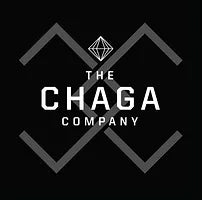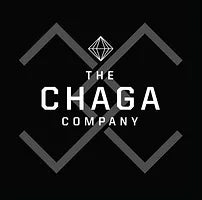Chaga and Turkey Tail have been the focus of intense scientific research in the past 30 years, as Western medicine tries to describe exactly what these superfoods do and how. Here’s what we know so far (references at the bottom):
Chaga and Turkey Tail are rich with powerful antioxidant compounds. An antioxidant compound absorbs the harmful byproducts of cellular metabolism which cause cell damage and speed aging. These compounds are found in the polyphenols, enzymes, and pigments (like melanin) that chaga and turkey tail produce as they grow. In addition, chaga and turkey tail have high levels of minerals like copper, selenium, zinc and manganese which promote the body’s own response to free radicals.
Antioxidant levels are measured in an ORAC score (Oxygen Radical Absorbency Capacity) – a “high antioxidant” food usually has an ORAC score of around 25,000/100g. When we sent our wild-sourced chaga for analysis, it had an ORAC score of 230,100/100g. (Other chaga producers report ORAC values around 150,000/100g – sourcing matters!)
Chaga and Turkey Tail both have very high concentrations of polysaccharides with therapeutic properties. One of the best studied is beta-glucans, a well-established immune-modulator which helps the immune system respond quickly and effectively, enabling your body to better fight stress and pollution, and decreasing the side effects of chemotherapy and other aggressive medication. Turkey Tail contains polysaccharide-K (PSK) and polysaccharide-P (PSP), which have been shown to antimetastatic cancer-fighting effects.
Chaga contains the compounds betulin and betulinic acid, terpenes that have anti-viral effects (including anti-HIV), as well as cholesterol-lowering properties. These compounds derive from the chaga organism’s symbiotic growth on birch trees in the wild, so any farmed industrially-produced chaga will not contain these compounds (one important reason why The Chaga Company is so careful about sourcing wild-crafted chaga). Chaga also contains phytosterols with powerful anti-viral and potential anti-cancer effects, such as inotodiol, lanosterol, ergosterol, and fecosterol.
The literature on health benefits of chaga and turkey tail is massive. Here is a selected reference list:
- Carolyn J. Torkelson, Erin Sweet, Mark R. Martzen, et al., “Phase 1 Clinical Trial of Trametes versicolor in Women with Breast Cancer,” ISRN Oncology, vol. 2012, Article ID 251632, 7 pages, 2012. doi:10.5402/2012/251632
- S. A. Motzer, J. Tsuji, V. Hertig, S. K. Johnston, and J. Scanlan, “Natural killer cell cytotoxicity: a methods analysis of 51chromium release versus flow cytometry,” Biological Research for Nursing, vol. 5, no. 2, pp. 142–152, 2003.
- H. Kobayashi, K. Matsunaga, and Y. Oguchi, “Antimetastatic effects of PSK (Krestin), a protein-bound polysaccharide obtained from basidiomycetes: an overview,” Cancer Epidemiology Biomarkers and Prevention, vol. 4, no. 3, pp. 275–281, 1995. View at Google Scholar
- L. J. Standish, L. N. Alschuler, A. B. Ready et al., “Botanical medicine in integrative oncology,” in Integrat ed Oncology, D. I. Abrams and A. T. Weil, Eds., pp. 104–146, Oxford University Press, New York, NY, USA, 2009. View at Google Scholar
- H. Lu, Y. Yang, E. Gad et al., “Polysaccharide krestin is a novel TLR2 agonist that mediates inhibition of tumor growth via stimulation of CD8 T cells and NK cells,” Clinical Cancer Research, vol. 17, no. 1, pp. 67–76, 2011. View at Publisher · View at Google Scholar
- P. M. Kidd, “The use of mushroom glucans and proteoglycans in cancer treatment,” Alternative Medicine Review, vol. 5, no. 1, pp. 4–27, 2000. View at Google Scholar · View at Scopus
- K. K. W. Chu, S. S. S. Ho, and A. H. L. Chow, “Coriolus versicolor: a medicinal mushroom with promising immunotherapeutic values,” Journal of Clinical Pharmacology, vol. 42, no. 9, pp. 976–984, 2002. View at Google Scholar · View at Scopus
- M. Fisher and L. X. Yang, “Anticancer effects and mechanisms of polysaccharide-K (PSK): implications of cancer immunotherapy,” Anticancer Research, vol. 22, no. 3, pp. 1737–1754, 2002. View at Google Scholar · View at Scopus
- B. Z. Zaidman, M. Yassin, J. Mahajna, and S. P. Wasser, “Medicinal mushroom modulators of molecular targets as cancer therapeutics,” Applied Microbiology and Biotechnology, vol. 67, no. 4, pp. 453–468, 2005.View at Publisher · View at Google Scholar · View at Scopus
- Guggenheim, Alena G., Kirsten M. Wright, and Heather L. Zwickey. “Immune Modulation From Five Major Mushrooms: Application to Integrative Oncology.” Integrative Medicine: A Clinician’s Journal 13.1 (2014): 32–44. Print.
- Watanabe O, Abe T, Kawakami M, Kakimoto M (2005) Antioxidation by water-soluble lignin-like substance from a northern terrain basidiomycetes, Fuscoporia obliqua. Bull Hokkaido Food Processing Res Center. 6 : 13-6.
- Kahlos, K. and Hiltunen, R. 1983. ‘Identification of some lanostane type triterpenes from Inonotus Obliquus’. Acta. Pharm. Fenn., 92, 220
- Kahlos, K. and Hiltunen, R. 1985. ‘Sterols and triterpenes in Inonotus Obliquus’. Acta. Agron., 34, 82
- Kahlos, K. and Hiltunen, R. 1986. ‘Anti-tumor tests of Inotodiol from the fungus Inonotus Obliquus’. Acta. Pharm. Fenn., 95, 173-7
- Yong Cui, et.al;(2005) Antioxidant effect of Inonotus obliquus. Journal of Ethnopharmacology 96, p.79–85
- ZHENG Wei-Fa, et.al.; (2008) Phenolic compounds from Inonotus obliquus and their immune-stimulating effects. Mycosystema 27(4): 574-581
- ZHENG Wei-Fa, et.al.; (2007) Sterol composition in field-grown and cultured mycelia of Inonotus obliquus. Acta Pharmaceutica Sinica 42(7); 750-756
LABORATORY RESULTS
Scientific Papers and Laboratory Test Results of our Chaga.




